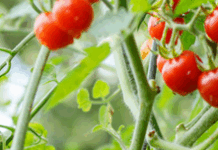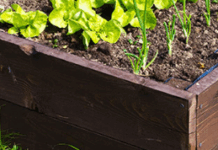If you haven’t touched your compost bin or pile all winter, don’t worry, you are not alone. It could be filled with kitchen scraps to the top or left untouched since the fall. Getting a compost pile going again after the long, cold winter can be intimidating, but it is possible with a little bit of time and careful management. For a successful compost pile, assess a starting point, turn the pile, manage inputs, and repeat for a hot pile in no time.
Assessing the Pile
As soon as the outdoors allows for a workday in the garden, check to see how the compost pile or bin is doing. Be sure to see if there have been any unintended additions over the winter, such as large branches or trash. It is also important to check if any parts of the bin are broken; maybe the wood is cracked, or the plastic is broken. Following the inspection, decide if repairs are needed before going ahead.
Now that the bin is structurally sound, see if any part of it is still active or if it froze through. Active compost piles produce heat. Look for some finished compost at the bottom or middle of the pile or steam coming off the pile. If the pile has either of these things, the pile is likely still cooking.
Turning the Pile
The next step is to turn the compost pile. This will take some muscle. Use a pitchfork to mix the materials and incorporate air into the pile. Composting is a recipe; the beneficial organisms that do the work need the right combination of air, water, carbon, and nitrogen. The goal is to provide the perfect home for these organisms to do their work, so compost is created at the end of the process. After the winter thaw, compost piles are likely to be wet and soggy rather than dry. If a pile is wet, don’t add water and just turn it. If a pile is dry, adding water will add moisture.
Managing Inputs
Next up is adding more brown and green material to the pile. These are carbon and nitrogen sources. In general, add about three parts carbon material to one part nitrogen by volume. This means that for every bucket of greens added, add three buckets of brown material. Some carbon sources include dry leaves, straw, pine needles, and sawdust. Some nitrogen sources include fruit and vegetable kitchen scraps, grass clippings, and plant trimmings.
Always continue to monitor the pile. Water it when dry and turn it at least once a week. Follow these steps to get a compost pile working again in no time.




